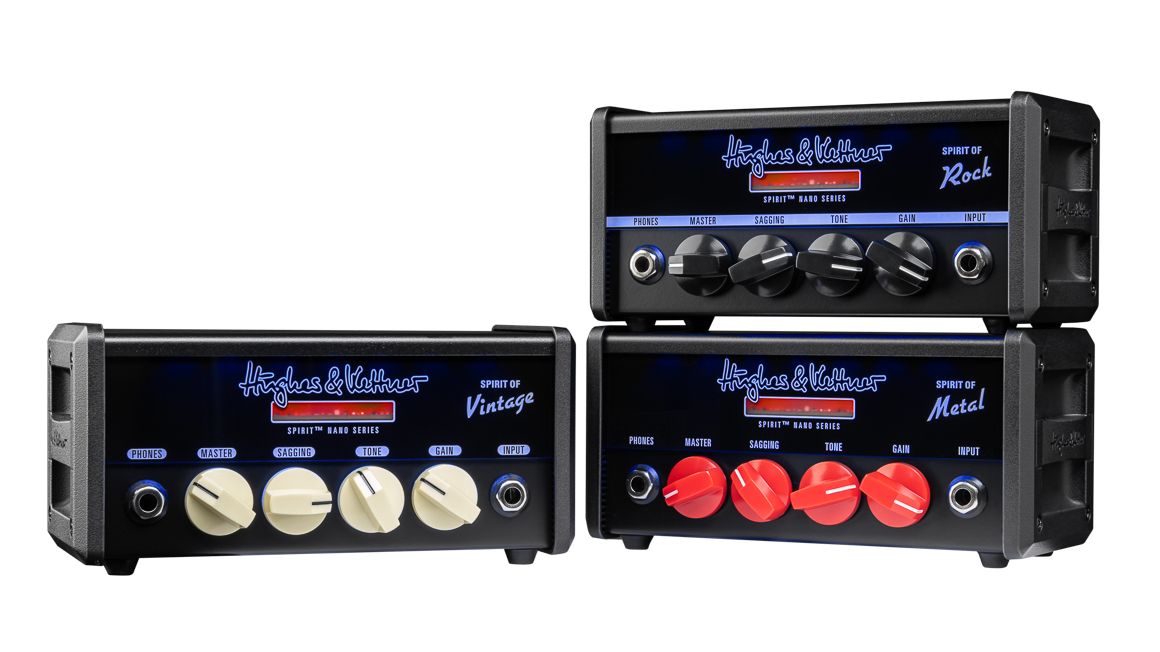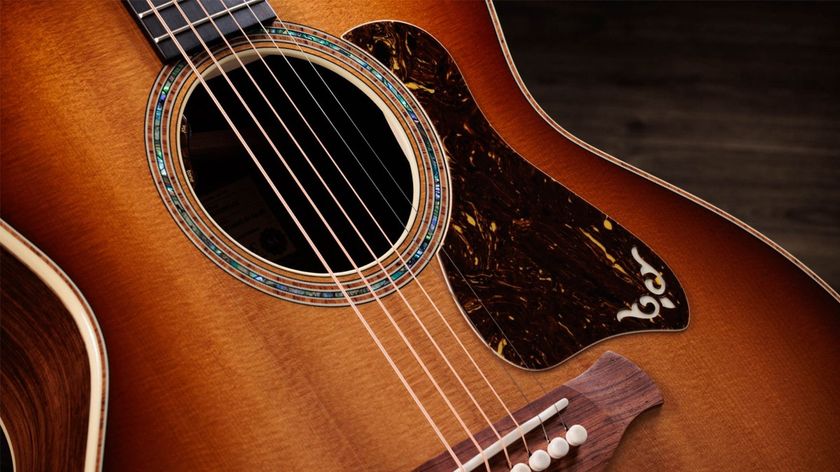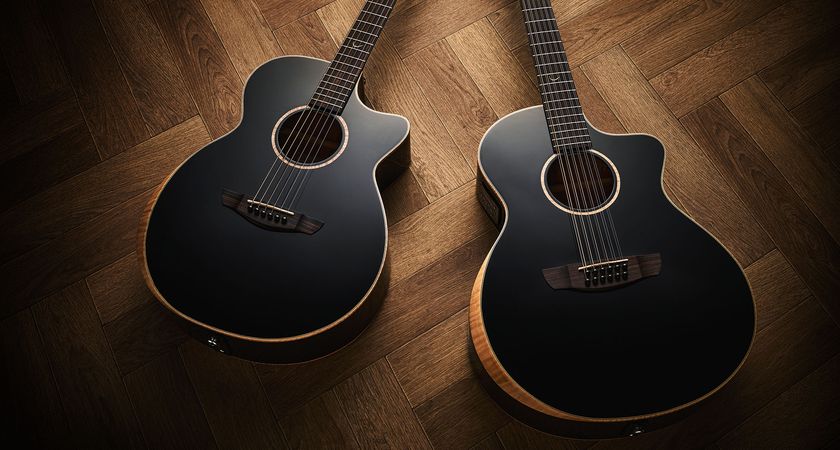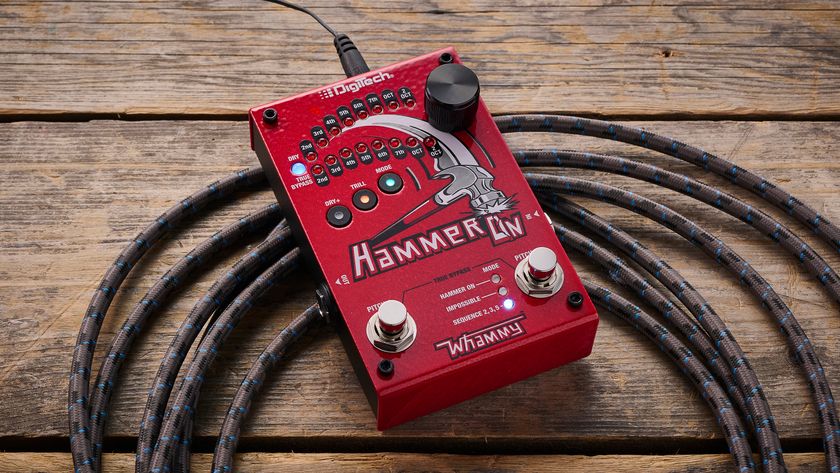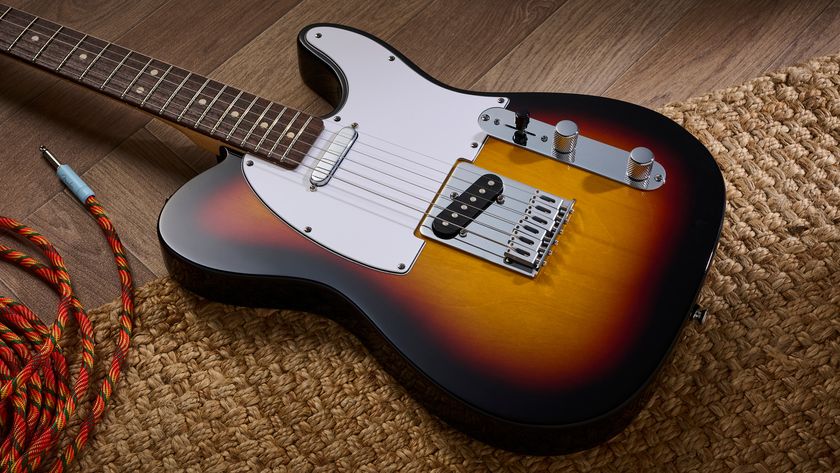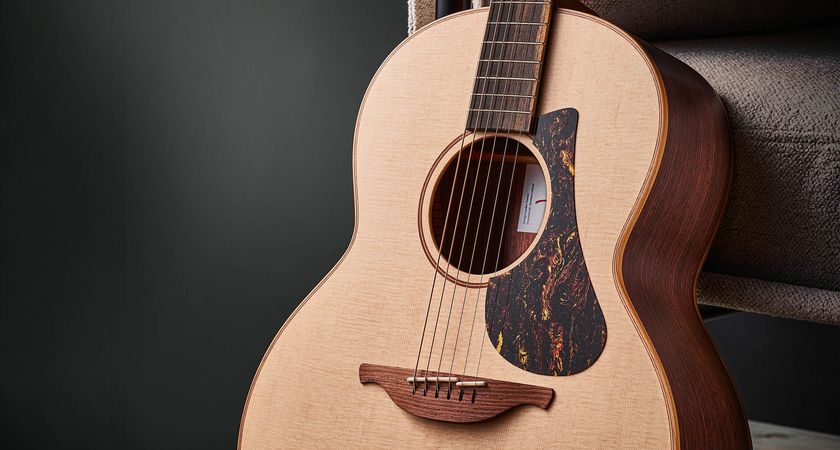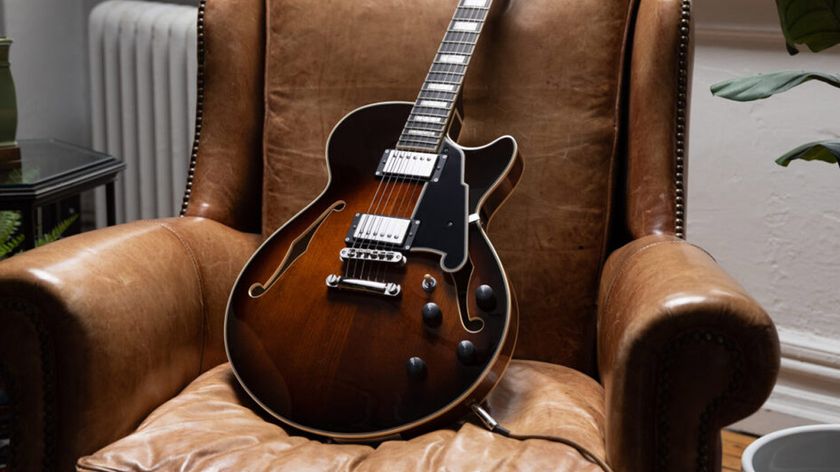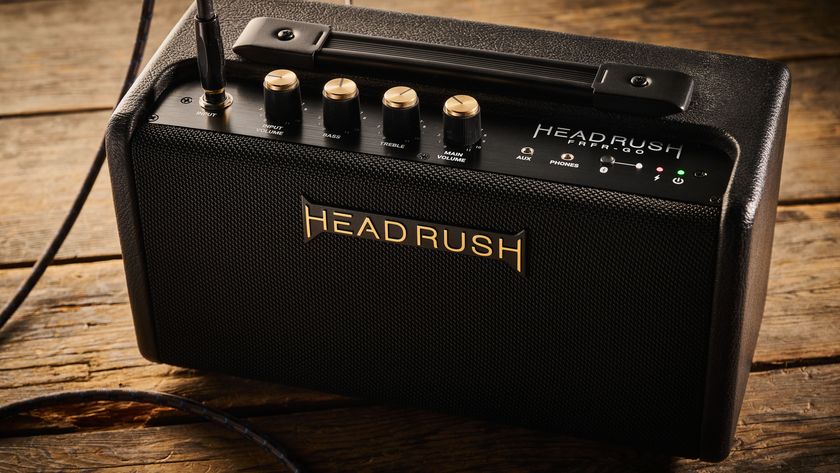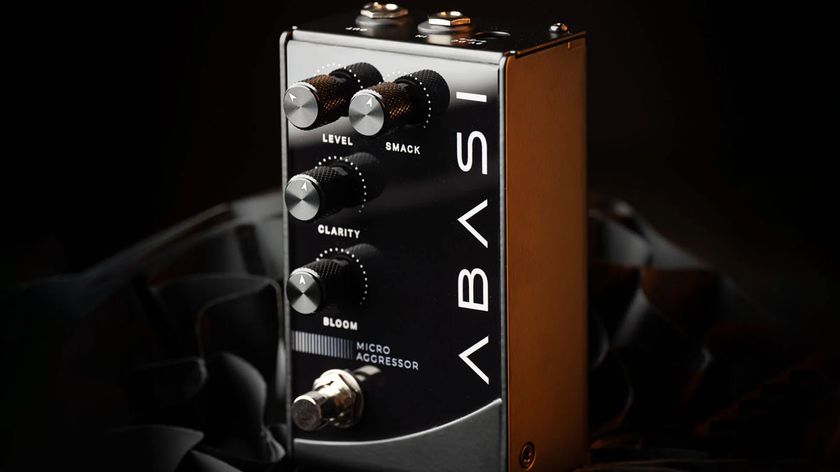Guitar World Verdict
Providing tonal versatility and volume output rivaling full-size amps, Hughes & Kettner Spirit Nano Series amps may be incredibly small in size but they fully deliver for live performance, recording and practice applications.
Pros
- +
Each model nails its brief.
- +
The Tone control is perfectly voiced for each amp.
- +
Sagging control is very impressive.
- +
Headphones out for silent practice.
- +
Portable, affordable and loud.
Cons
- -
No effects loop.
You can trust Guitar World
When it comes to advancements in guitar technology, the majority of the industry’s most exciting developments over the last few decades have taken place in the guitar amp market. One of the more fascinating trends is how small amplifiers have decreased in size while also expanding their tonal versatility and performance.
Unlike most early mini amps, which provided adequate volume output and decent but limited and sometimes generic tones, today’s diminutive micro amps can deliver sounds and volume levels comparable to the big boys.
The Hughes & Kettner Spirit Nano Series amps are a great example of just how far micro amp technology has come in recent times. Hughes & Kettner offers three different flavors of Spirit Nano amps – Vintage, Rock and Metal – each sharing similar designs and features but delivering entirely different sonic personalities.
The Spirit Nano Series amps are small and light enough to stash in a guitar case accessory pocket or airliner carry-on bag, but they are truly gig-worthy amps that can also be used for practice (with headphones) and direct recording.
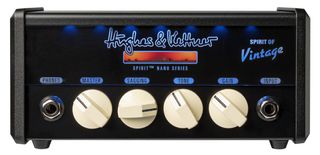
Features
The secret behind the micro dimensions of Hughes & Kettner Spirit Nano Series is the company’s Spirit Tone Generator, described as “a novel bionic design (that) replicate(s) the analog processes of a tube circuit.” This technology is not solid-state or digital, but genuinely analog.
The name on the faceplate and the color of the knobs are different on each model but even a blindfolded guitarist can tell which is which just by plugging in
Somehow the engineers at Hughes & Kettner figured out how to rebuild analog technology and make it better, smaller, cheaper. Each model delivers 25 watts of output at 8 ohms, or up to 50 watts with a 4-ohm speaker cabinet. All three Hughes & Kettner Spirit Nano Series amps share identical controls, jacks and features, but each model is voiced entirely differently from the others.
The name on the faceplate and the color of the knobs are different on each model – white for Vintage, black for Rock and red for Metal – but even a blindfolded guitarist can tell which is which just by plugging in. In signature Hughes & Kettner style, the faceplate is illuminated with blue backlights. The Spirit Tone Generator also illuminates with a tube-like warm orange glow.
Front panel features consist of 1/4-inch head-phone and instrument input jacks and Master, Sagging, Tone and Gain controls. A 1/4-inch line out-put, 1/8-inch auxiliary input, AES power save feature switch and 1/4-inch speaker output are mounted on the back panel. The amp head is powered by a 24VDC power supply.
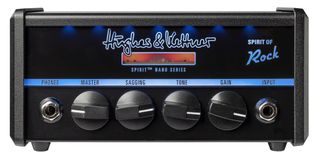
Performance
Before I get into the sounds of each model, let me address this mysterious “sagging” feature – an ingenious innovation that duplicates the varying dynamics of power amp tubes. The sagging control’s lower range provides sparkling, lively tones, but the sound becomes fatter and more compressed as the control is turned up.
The sagging control also is highly interactive with the master and gain controls – for example, setting the sagging control at 10 can work well at low master and gain settings to replicate the sound of a tube amp being pushed hard, but at higher master and gain settings it can be a little too over the top.
The Vintage model provides the most clean headroom, but its gain is generous enough to produce distortion tones ideal for classic metal and grunge. The tone control provides an attractive sweep from the fat midrange of a classic low-watt combo to bolder dipped-midrange “American” amp character.
The Vintage model provides the most clean headroom, but its gain is generous enough to produce distortion tones ideal for classic metal and grunge
The Rock model comes on stronger, with a much more pronounced midrange voice and more aggressive distortion grind. This model excels at fat, singing lead tones with impressive sustain that emerges when gain is dialed around 5 and the sagging control is set between 6 to 9.
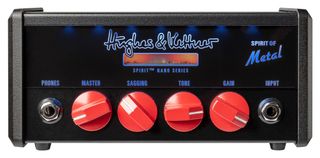
The Metal model truly lives up to its name, providing only the slightest hint of clean and overdrive tones at minimal master and gain settings before diving headlong into generously saturated distortion. The tone control on this model is impressively dialed in to deliver everything from classic Slayer sludge to razor sharp Cowboys-era Dimebag dirt. The bass is big but tight and the mids can bark or disappear completely.
All three are more than loud enough to gig with and sound great paired with speaker cabs ranging from 1x12 to 4x12. The line out is a direct recording/re-amping secret weapon, providing unfiltered audio for getting the best out of IR speaker and reverb simulation.
Specs
- PRICE: $239
- TYPE: Analog amp head with analog Spirit Tone Generator – available in Spirit of Vintage, Spirit of Rock, Spirit of Metal models
- POWER: 25 watts @ 8 ohms
- CHANNELS: 1
- CONTROLS: Master volume, sagging, tone, gain
- I/O: Headphones out, line out, 1/8" aux input, 1/4" speaker output (4 to 16 ohms)
- WEIGHT: 1.1kg [w/ power supply]
- CONTACT: Hughes & Kettner
Chris is the co-author of Eruption - Conversations with Eddie Van Halen. He is a 40-year music industry veteran who started at Boardwalk Entertainment (Joan Jett, Night Ranger) and Roland US before becoming a guitar journalist in 1991. He has interviewed more than 600 artists, written more than 1,400 product reviews and contributed to Jeff Beck’s Beck 01: Hot Rods and Rock & Roll and Eric Clapton’s Six String Stories.
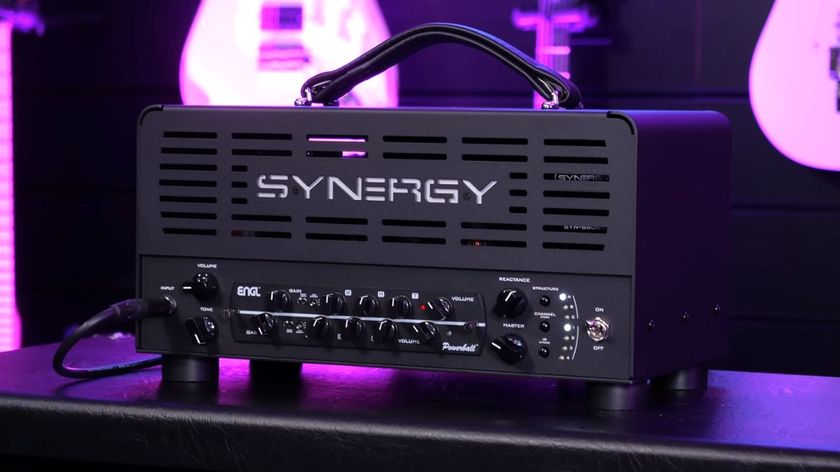
“The world’s most convenient all-tube amp head”: Steve Vai-backed firm Synergy has unveiled a tiny amp head that lets you swap in tones from some of the world’s biggest amp builders
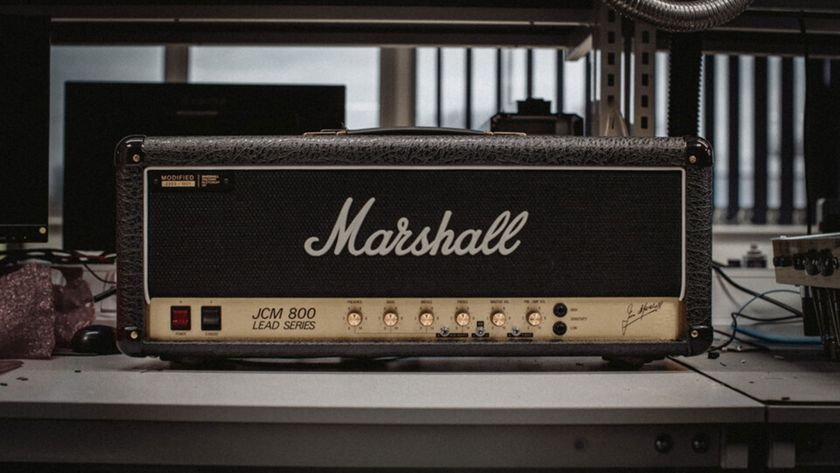
“Modified connects us with a long-standing tradition of modifying Marshall amps that dates back to the 1970s”: Marshall unveils factory modded takes on the 1959 Plexi and JCM800 – tipping its cap to the amp wizards of rock’s golden era
